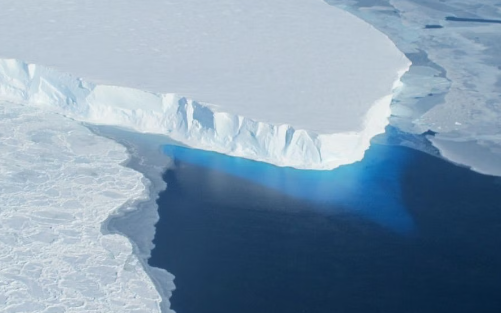West Antarctica’s Vulnerability
Different ice sheets covering different parts of Antarctica have been a mystery for a long time. A new study is starting to solve that mystery by showing why West Antarctica is still very vulnerable to warming in the present day. The study, which was published in the prestigious magazine “Science,” shows that East and West Antarctica’s ice sheets formed at very different times.
Initial Ice Sheet Formation
The Earth’s climate changed from a warm greenhouse state to a cooler icehouse state about 34 million years ago. This big change marked the start of the building of ice sheets in Eastern Antarctica. But it took an extra 7 million years for ice to cover the western part of the area. This difference is very important for understanding the natural problems Antarctica is currently facing.
Geological and Climate Insights
For the most recent study, sediment samples from the bottom near Pine Island and Thwaites glaciers were looked at. Based on these examples, it looks like there was no ice in West Antarctica during the early stages of the major glaciation. Johann Klages and his team from the Alfred Wegener Institute say that dense forests and a cool to temperate temperature probably made it harder for ice to form in the area at first.
Advancement and Spread of Ice
The study also shows that ice started to cover Eastern Antarctica and slowly moved to the Amundsen Sea area in the west, where air and water temperatures were warmer. The Transantarctic Mountains helped keep wet air masses in place, which made it easier for permanent snow and ice caps to form and spread over large parts of East Antarctica.
Delayed Ice Coverage in West Antarctica
The ice sheet moved more slowly toward West Antarctica than expected because of the land’s shape and the weather. Because the ground was lower and it was warmer, it took much colder temperatures for the ice to cover places that were already below sea level.
Implications for Modern-Day Climate Change
Many parts of West Antarctica are still below sea level, which makes them more likely to melt when temperatures rise slightly. This knowledge is very important because it shows how fragile the area is and helps improve the accuracy of current climate models, which aims for better predictions and ways to reduce the effects of global warming.
About ice sheet vulnerability
Around 99% of the world’s liquid ice is held by ice sheets, mostly in Greenland and Antarctica. The Greenland Ice Sheet is losing mass at a very fast rate of about 280 gigatons per year. This is mostly because the top is melting and icebergs are breaking off. In some places, Antarctica’s ice shelves have shrunk by up to 18% in the last 20 years. If they melt all the way, the water level could rise by 58 meters. A big reason for Antarctic ice loss is that the Southern Ocean is getting warmer. Recent studies show that the Arctic will no longer have ice in the summer by 2050. These studies stress the importance of fast climate feedback loops, such as the loss of reflecting ice surfaces that make the oceans absorb more heat. Global ocean currents and weather patterns are also getting messed up because of melting ice sheets. This has an effect on global climate systems and species.
Month: Current Affairs - July, 2024
Category: Environment Current Affairs







